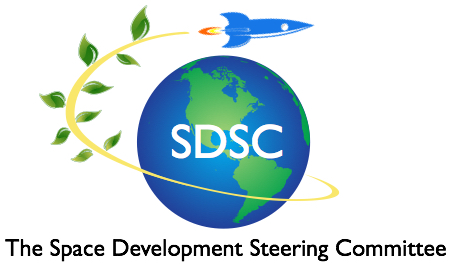The Space Development Steering Committee calls on NASA to abandon its dysfunctional and hideously expensive Space Launch System and its overpriced and under-capable Orion capsule and to replace these money-eating monstrosities with three private industry initiatives, one for the Moon, one for asteroids, and another for Mars. Yes, the Space Development Steering Committee is calling for private companies to develop our Mars, Moon, and asteroid programs. In conjunction with NASA.
A private-industry Mars program? Surely you are joking. Not at all. Elon Musk’s SpaceX already has a Mars program, one that’s much further along, much less expensive, and much more doable than NASA’s Space Launch System-based program. Jeff Bezos’ Blue Origin seems to have a Moon program in the works. And other competitors are anxious to get into the race. United Launch Alliance—a joint project of Boeing and Lockheed Martin—has plans to turn the space between the earth and the moon into the travel route for a $2.7 trillion economy. And Sierra-Nevada has plans for a shuttle-like vehicle that can go back and forth between Low Earth Orbit and the earth’s surface, landing at commercial airports.
Since 2006, NASA has pioneered a new form of public-private partnership. It’s called a COTS program. COTS stands for “Commercial Orbital Transportation Services.” A COTS program invites private companies to bid on services NASA needs. And a COTS program bypasses traditional, military-style cost-plus contracts with the ballooning expense those contracts produce. The result? The COTS program for delivery of cargo to the International Space Station has helped Elon Musk develop his Falcon rockets and Dragon capsules, rockets and capsules that have successfully delivered cargo and returned completed science experiments to earth ten times. At a fraction of traditional prices.
Now it’s time for NASA to create three new COTS programs, one for Mars, one for the Moon, and one for the asteroids. Three COTS programs
- to help Elon Musk and his future competitors put cities on Mars,
- to help Robert Bigelow’s Bigelow Aerospace, an inflatable space habitat company, land and install its 3-inflatable-unit lunar base on the Moon,
- to help Jeff Bezos and his competition deliver packages to and from the water mines of the Moon,
- and to help companies like Deep Space Industries and Planetary Resources mine asteroids for high-value resources earth is running short on.



1 Comment
Mike Snead
The Space Development Steering Committee’s recommendations in this posting are not well founded. NASA’s role, regarding outer space, is to undertake science and discovery, and to undertake and encourage space-related technological innovation and development that will further America’s aerospace technological mastery. NASA’s role is not to spend federal funds to undertake commercial off-the-shelf (COTS) programs that are not in direct support of NASA’s science and discovery mission. By definition, a COTS program does not require significant technological development or risk reduction. Thus, to assert that NASA should now undertake a COTS effort related to building cities on Mars, establishing a permanent commercial base on the Moon, extracting water from the Moon, or harvesting extraterrestrial resources is inconsistent with the proper purpose of a government COTS effort. With this being said, the committee’s conclusion that the Space Launch System should be replaced with improperly defined COTS programs is without merit. Properly used, the Space Launch System will be able to lead the resurgence of America’s spacefaring enterprise. See this short video for examples of how this system can be used. https://www.youtube.com/watch?v=9Xu0-UrFInQ